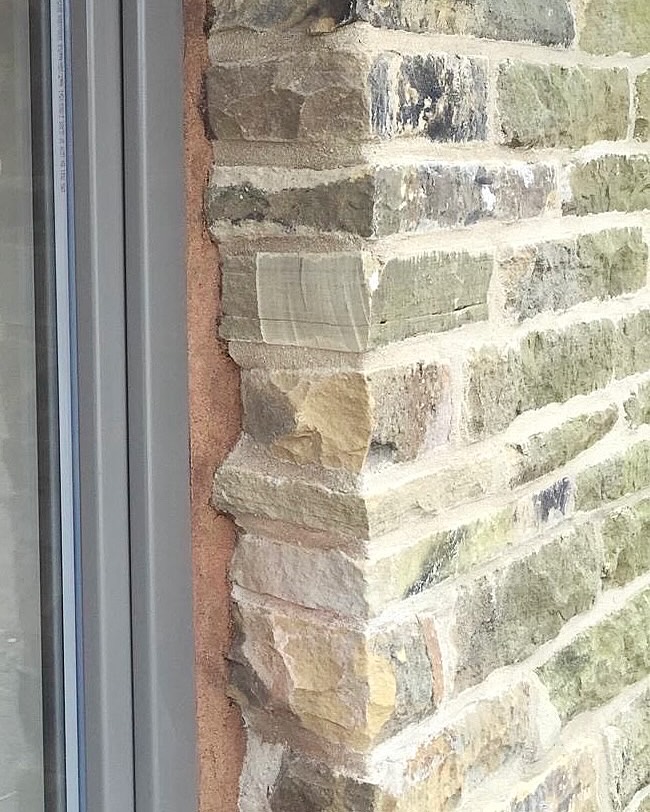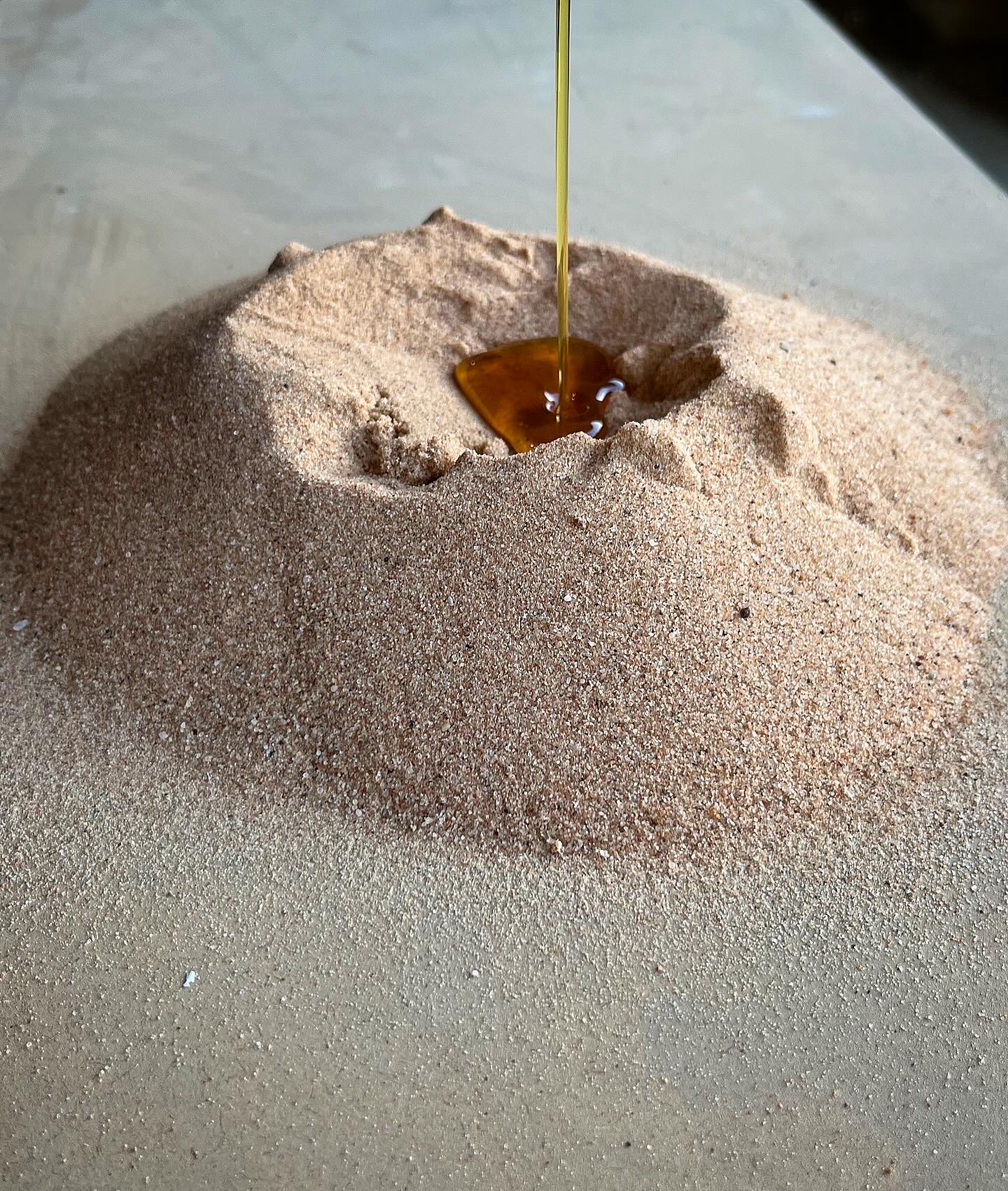Burnt Sand Mastic: What it is and How to use
Burnt Sand Mastic: What it is and How to use
Burnt sand mastic is a traditional sealing material used to fill joints between wooden or metal frames (like doors and windows) and masonry. It is known for its durability and flexibility, making it ideal for historic buildings and the restoration of older buildings. The mastic is made by mixing burnt sand with double boiled linseed oil and a rosin hardener, creating a waterproof and slightly flexible seal.

The burnt sand mastic adheres tenaciously to most surfaces and has been used for over 200 years in building construction and renovation. We follow the traditional method of preparation by roasting fine silver sand and supplying with British Wax linseed oil which has been double boiled with rosin driers added. Burnt Sand Mastic is designed to harden slowly but remain flexible.
Surface Preparation
Before pointing ensure that all wide gaps between the frames and the masonry are tightly packed with well haired lime mortar or a fibred Natural Hydraulic Lime Mortar. Allow time for the mortar to cure and harden. Repoint any damaged/missing mortar and repair damaged stone or brick with a breathable stone repair material.
Timber frames should have loose flaking paint removed and be fully primed and undercoated before applying the finished mastic, ideally wood work is best fully finished, although a final finishing coat may be left until the mastic has properly set.
How to mix
Burnt sand mastic is a two-part product. For each litre of burnt sand add approximately 250ml of the double boiled linseed oil hardener. Add only a little at a time and mix until the mastic forms a thick putty like consistency, often described as a damp brown sugar consistency, which comes cleanly off the mixing trowel.
How to apply
Let the mix stand on a board for 15 minutes and use any excess oil which runs off plus any remaining oil as a primer, applied with a brush to the frame and adjoining masonry. Check the absorbency of the masonry, repair or render with water as the mastic is oil bound and high absorbency may occasionally result in bleeding from the mastic into the surrounding masonry. If the masonry has a high surface absorbency, use tape to protect and mask the masonry to prevent undue surface spread
If the mastic mix is over wet, let it stand for longer to allow it to stiffen up and then remix vigorously. Apply the mastic whilst the primer still feels oily or tacky to touch. Working with a mastic box or a small hawk and a proprietary mastic trowel press the mastic firmly into the angle of the frame/jamb and filling from the bottom up, forming the mastic joint to a neat 45 degree angle.
Keep tools wiped with an oiled cloth during the application. After forming the angle, starting from a corner, press a clean oiled mastic trowel tightly against the face of the timber frame and masonry jamb and carefully press and draw the trowel to create a neat regular fillet. Mastic fillets should be neat 20 - 25mm across the diagonal face
Clean away any excess mastic and wipe the finished edges on completion. For mastic to sills, ensure the mastic does not bridge any drips and is left recessed behind the drip check.
Mastic should not be over painted.
Our range has 5 colours created using natural mineral pigments.
Benefits of Burnt Sand Mastic
- Durability It forms a long-lasting seal that can withstand the test of time, reducing the need for frequent maintenance.
- Flexibility The mastic remains slightly flexible even after setting, which helps accommodate minor movements in the building structure and prevents cracking.
- Waterproofing It provides an effective barrier against water ingress, protecting the building from damp and related issues.
- Aesthetic Compatibility Burnt sand mastic blends well with traditional building materials, maintaining the historic and aesthetic integrity of the structure.
- Ease of Use The mixing and application process is straightforward, making it accessible for both professionals and DIY enthusiasts.
- Environmental Friendliness Made from natural materials like sand and linseed oil, it is a more eco-friendly option compared to synthetic sealants.

